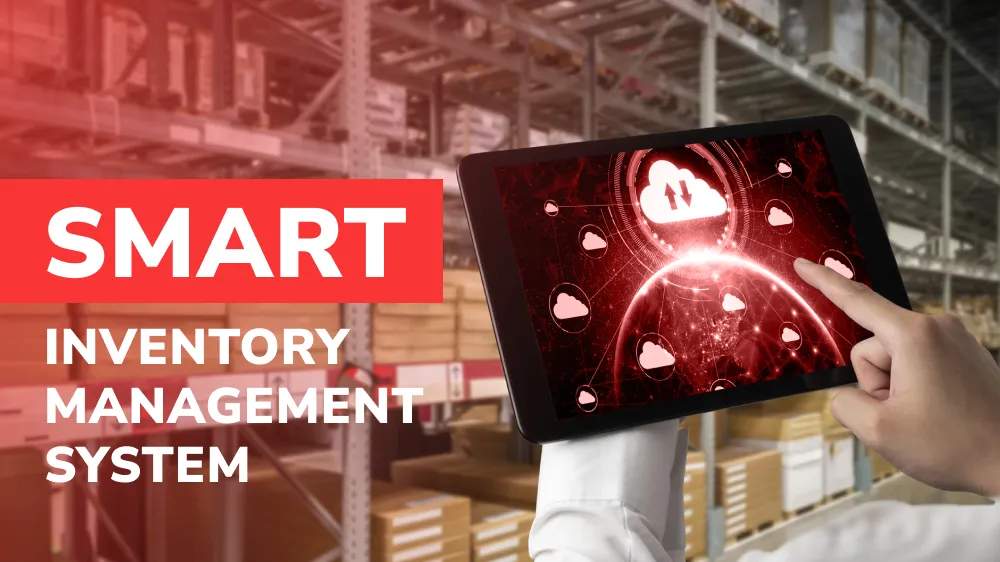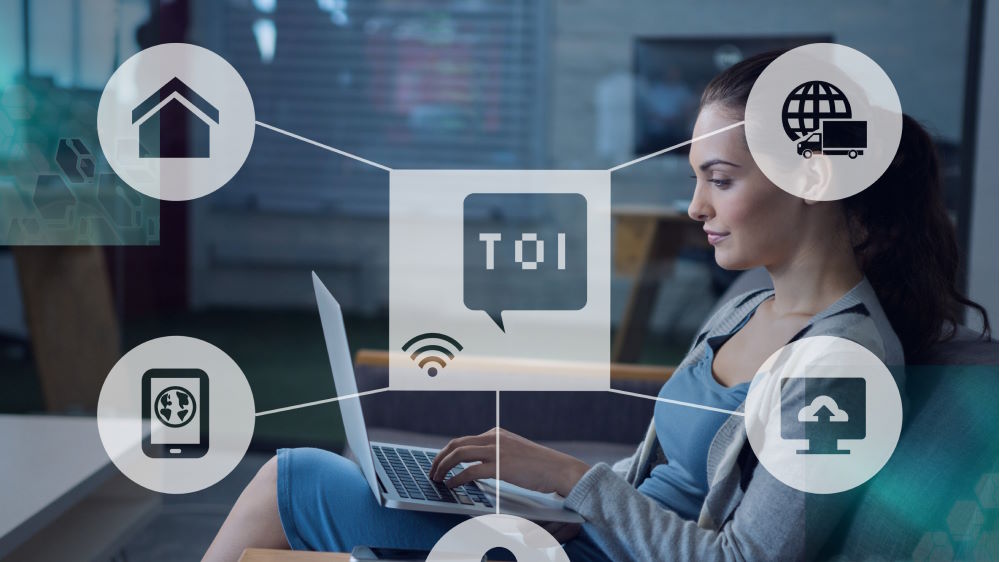
When Technologies Collide: Exploring the Powerful Impact of IoT in Telecommunications

Content Map
More chaptersIn a world where technology continuously evolves, sometimes it’s the collision of two powerful forces that sparks the most groundbreaking innovations.
One of the outstanding technologies, the Internet of Things (IoT), has recently evolved from a mere concept to a practical solution widely adopted by households and businesses. IoT devices offer extensive capabilities by seamlessly connecting to larger networks. According to a report by Market Research Report, the IoT integration market size is expected to grow from $3.2 billion in 2023 to $12.1 billion by 2028 at a compound annual growth rate (CAGR) of 30.8%. This growth is driven by the increasing demand for low-power wide-area (LPWA) networks, cloud services, and edge computing, as well as the rising adoption of 5G, narrowband IoT, and other advanced technologies.
It’s important to know that, given the strong dependence of the Internet of Things on telecommunications providers, the telecom industry stands to gain the greatest advantages from this technology.
Enter the remarkable convergence of IoT and telecommunications, a collision that has sent shockwaves through industries, transforming the way we communicate, connect, and collaborate. We will explore the powerful impact of IoT in telecommunications and how it can create new opportunities, use cases, and benefits for telecom operators and customers. We will also discuss the best practices and challenges of implementing IoT in telecom and provide some insights into this emerging field.
What Is IoT in Telecommunications?

The Internet of Things (IoT) is a network of interconnected devices that can collect, exchange, and analyze data over the Internet. IoT platforms have the potential to transform various industries and sectors, including telecommunications.
Telecommunications, or telecom, is the transmission of information by various means, such as wire, radio, optical, or other systems. The telecom sector enables communication and connectivity across the world, and IoT solutions can enhance and expand its capabilities and services.
At its core, IoT in telecom businesses involves the integration of sensors, devices, and systems with network infrastructure to enable seamless data exchange and communication. Through the deployment of IoT-enabled devices and applications, telecommunications networks become more than mere conduits for information. They become intelligent ecosystems that facilitate real-time data collection, analysis, and decision-making.
The Powerful Impact of IoT in Telecommunications

The convergence of IoT and telecommunications has unleashed a powerful wave of transformation across industries. The impact of IoT in telecom extends far beyond mere connectivity. It revolutionizes the way businesses operate, enhances customer experiences, and drives innovation. Let’s explore the remarkable ways in which IoT is reshaping the telecommunications landscape.
Enhanced Connectivity and Network Optimization
The IoT platform allows telecom service providers to enable seamless connectivity between devices, thereby creating a network that goes beyond traditional communication channels. Through the integration of IoT-enabled sensors, devices, and systems, telecommunications networks become smarter and more efficient. This enhanced connectivity allows for real-time data exchange and enables intelligent decision-making.
For example, IoT sensors embedded in infrastructure can monitor network performance, identify bottlenecks, and optimize data routing, ensuring reliable and uninterrupted connectivity.
Improved Operational Efficiency and Cost Savings
IoT services empower telecom providers to streamline operations, reduce costs, and enhance efficiency. With IoT-enabled devices and applications, network operators can remotely monitor and manage their infrastructure, identifying and resolving issues proactively. This leads to improved network performance, reduced downtime, and optimized resource allocation.
Moreover, IoT data analytics provides valuable insights into network usage patterns, allowing telecommunications companies to optimize capacity planning, network deployment, and maintenance schedules, resulting in significant cost savings.
Advanced Data Analytics and Predictive Maintenance
Massive volumes of data are produced by IoT’s connected devices and sensors. In telecommunications, this data can be leveraged to gain valuable insights and drive informed decision-making. Through advanced big data analytics, telecom companies can analyze patterns, trends, and customer behavior, enabling them to make data-driven decisions for network optimization, service enhancements, and targeted marketing strategies.
Additionally, IoT enables predictive maintenance, allowing providers to identify and address potential network issues before they escalate, minimizing downtime and improving overall network reliability.
Enhanced Customer Experience and Personalized Services
IoT technologies in telecommunications open up new avenues for delivering personalized services and enhancing customer experiences. By leveraging data collected from IoT devices, telecommunications providers can gain a deeper understanding of customer preferences, behaviors, and needs. This enables them to offer tailored services, personalized recommendations, and proactive support.
For example, IoT-powered smart home services allow customers to control their home devices remotely, customize settings, and receive alerts or notifications based on their preferences. Personalization boosts consumer pleasure and loyalty.
IoT Applications in Telecommunications
The integration of IoT in the telecom has paved the way for a multitude of innovative applications that are transforming the way we live, work, and interact with our surroundings.
The IoT in the telecom industry presents telcos with a unique and highly profitable chance to monetize their data and expand their presence into diverse sectors, providing projects and services that extend beyond traditional network connectivity.
Smart Cities and Connected Infrastructure
Telecom providers are at the forefront of developing cutting-edge smart city solutions. A vast array of IoT sensors monitor essential aspects of the urban environment around the clock. Traffic flow sensors embedded in roads detect congestion and share real-time updates with navigation apps. This enables officials to redirect traffic and citizens to optimize commutes.
Energy and utilities are also transformed with IoT. Intelligent streetlights installed with motion sensors automatically adjust brightness based on vehicle and pedestrian movement to save costs. Smart meters send automated gas and electricity readings to utility companies every 15 minutes. This improves billing accuracy and helps detect anomalies signifying leaks or unauthorized usage.
Critical infrastructure is also now connected. Dams, bridges, and buildings are structurally monitored through vibration sensors for signs of failure or stress. Images from CCTV drones surveying the cityscape help authorities respond faster to emergencies like accidents or crimes in progress. 5G networks provide the backbone for such mission-critical services with their ultra-low latency capabilities.
Industrial Monitoring Systems
In industrial environments, IoT brings unprecedented visibility and control. Condition monitoring sensors attached to machinery on production lines continuously track vibration, temperature, pressure, and other parameters. This predictive maintenance approach helps detect anomalies before equipment fails, minimizing downtime.
Livestock farm management is also enhanced with IoT. Devices track the movement and behaviors of cattle, spotting health issues or signs of stress early. Environmental sensors check barn conditions like ventilation, temperature, and humidity levels to ensure animal welfare. IoT data analytics tools identify patterns to optimize feeding routines and maximize productivity.
Logistics is revolutionized with real-time cargo tracking using IoT sensors integrated within containers, pallets, and vehicles. Cold chain solutions precisely monitor temperatures during transit and alert if perishable goods deviate from the set point. Quality control of manufactured items is also improved using vision sensors and AI to automate inspections.
IoT Connectivity Services
As millions of IoT devices come online, managing the massive network connectivity has become a challenge on its own. Leading this charge are telecom providers that offer scalable and secure connectivity solutions tailored for IoT ecosystems.
They provide optimized LPWAN connectivity over large geographical areas for devices with low bandwidth needs, like smart meters. 3G/4G cellular networks connect assets with moderate data usage, while 5G enables real-time interactions for mission-critical applications. Satellite links ensure global connectivity for maritime and remote asset monitoring.
Value-added services include flexible billing options, remote SIM provisioning, geofencing features, data pooling, and analytics dashboards. Managed security services also address the risks of such vast networked environments through encryption, authentication, and access control. All these are handled centrally through their IoT connectivity management platforms, freeing customers to focus on core operations.
These are just a few examples of the diverse IoT applications in telecommunications. As the technology continues to advance, we can expect even more innovative use cases to emerge, creating a connected world where data-driven insights and intelligent systems enhance our daily lives, drive efficiency, and unlock new possibilities for industries and individuals alike.
Overcoming IoT Implementation Challenges in Telecom
Implementing IoT solutions in the telecommunications industry comes with its fair share of challenges. To capitalize on the immense opportunities presented by IoT, telecom providers must address these implementation challenges head-on.
Security and Privacy Concerns
Security and privacy are paramount in IoT implementation. Telecom companies must prioritize the development and implementation of robust security measures to protect against unauthorized access, data breaches, and cyber threats. This involves implementing strong encryption, authentication mechanisms, and secure protocols.
Regular security audits and assessments are also vital to identify vulnerabilities and ensure ongoing protection. By proactively addressing security and privacy concerns, telecom companies can instill confidence in their customers and ensure the confidentiality and integrity of data transmitted over their networks.
Scalability and Infrastructure Requirements
IoT entails the connection of a massive number of devices, leading to increased strain on existing network infrastructures. Telecom companies must ensure that their networks are capable of handling the exponential growth in data traffic and device connectivity.
Scaling infrastructure to accommodate the increasing number of IoT devices, managing bandwidth requirements, and optimizing network performance are critical considerations. This often involves upgrading network capacity, implementing edge computing capabilities, and embracing technologies like 5G to support the high data volumes and low-latency requirements of IoT applications.
Collaboration and Partnerships in the Ecosystem
Implementing IoT solutions can be complex, requiring specialized knowledge and expertise. Telecom companies may benefit from partnering with reliable experts, such as Orient Software, to overcome implementation challenges.
Orient Software offers extensive experience in IoT development and can provide valuable support in designing, developing, and deploying IoT solutions tailored to the specific needs of the telecommunications industry. Our expertise can help telecom companies navigate security concerns, ensure scalability, and optimize infrastructure requirements.
By partnering with Orient Software, telecom companies can tap into a trusted resource of IoT specialists, accelerating their IoT implementation journey and maximizing the potential of IoT in telecommunications.






